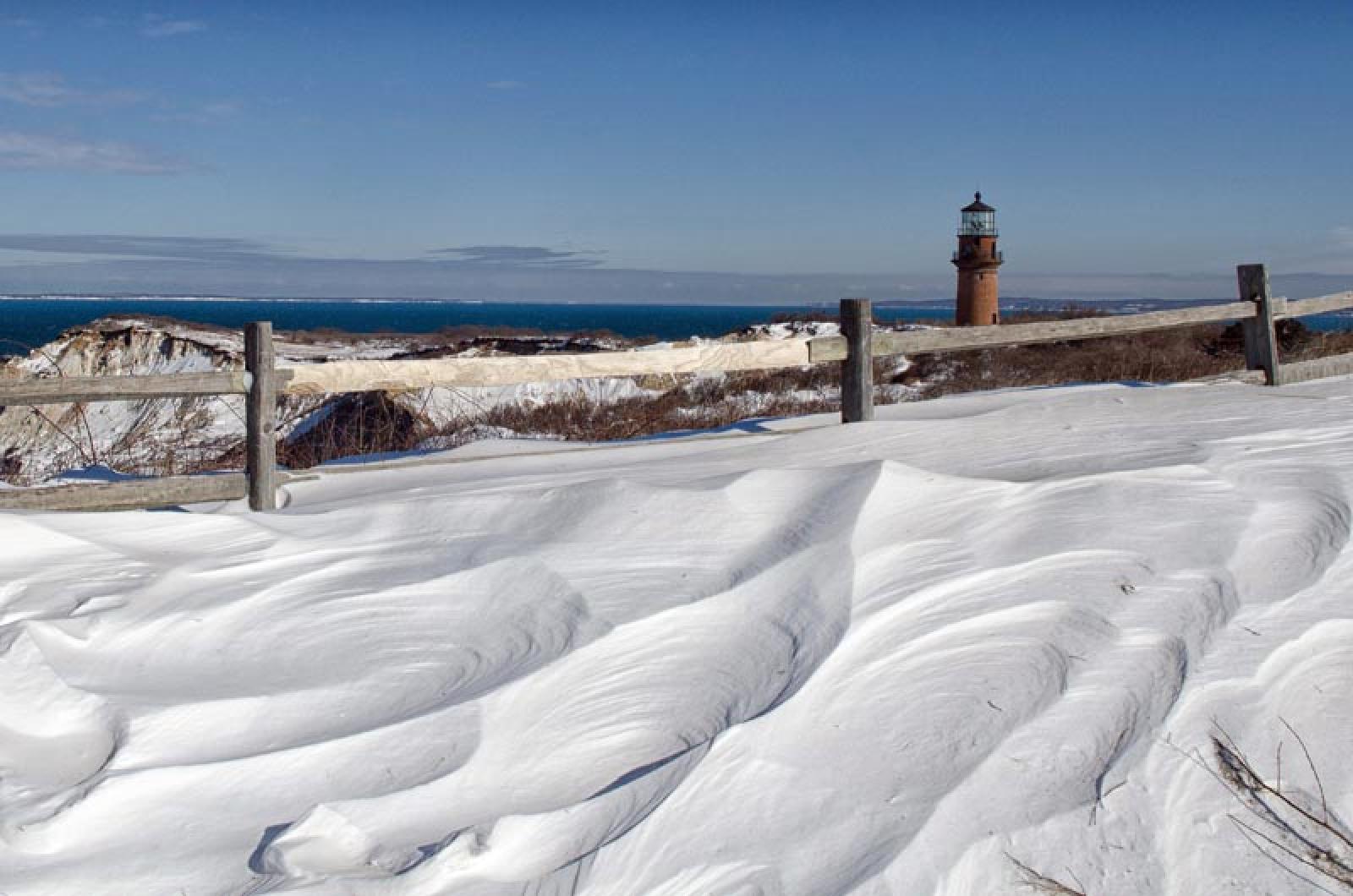The Gay Head Light relocation project has hit a potential snag following recent notice from the state Natural Heritage and Endangered Species Program that the site contains habitat for the broad tinker’s weed, an endangered wild plant.
A detailed environmental study must be conducted, the town has learned, and because the plant is dormant in winter and cannot be detected at this time of year, the survey must be performed after June 1. Nevertheless Len Butler, chairman of the Gay Head Light relocation committee, said he did not believe the problem would delay the lighthouse moving project, which is scheduled to begin next month.
In a letter to the town dated Feb. 12, Natural Heritage director Tom French said the town would be required to hire a state-approved botanist to perform a field survey and prepare a conservation management plan for the area.
In a statement issued this week, the town said it had contracted with Oxbow Associates, an environmental engineering firm from Acton, to prepare a conservation management plan.
Mr. Butler said Wednesday that the management plan would involve placing a conservation restriction on other suitable habitat near the lighthouse, and would be an alternative to the survey, since the project cannot wait until after June 1. The town has “a great deal of properties in the cliffside areas,” he said. The town first heard about the potential setback a month ago, but the implications were unclear, Mr. Butler said.
“It’s actually fine for the town, because we don’t want people tromping through these fragile areas anyway,” he said. He hoped the issue would be resolved by April.
A similar management plan is in place on Martha’s Vineyard Land Bank property in the North Head area of the cliffs, where broad tinker’s weed and other species are known to flourish.
Sometimes called feverwort and wild coffee, the broad tinker’s weed (Triosteum perfoliatum) grows naturally in savannahs and is a state-listed endangered species. It is protected in Massachusetts and Rhode Island.
The historic brick lighthouse, which sits some 46 feet from the edge of a rapidly eroding cliff, is also thought to be endangered, and the town and community groups have been gearing up for more than a year to raise money and organize a set of complicated logistics to move it to a new location about 135 away. The town has aimed for late May to complete the move.
Continued preparation of the site, including an archaeological survey of the foundation of the former lightkeeper’s quarters, has already been delayed by the cold weather, pushing the project start date to April. Mr. Butler did not believe the issues surrounding broad tinker’s weed would affect the overall timeframe of the move.
“The officials at Natural Heritage have indicated that they are aware of our situation and the urgency of the project and will do whatever they can to expedite the approval of this plan,” he said.
He said there were no other protected species in the relocation area.







Comments (11)
Comments
Comment policy »